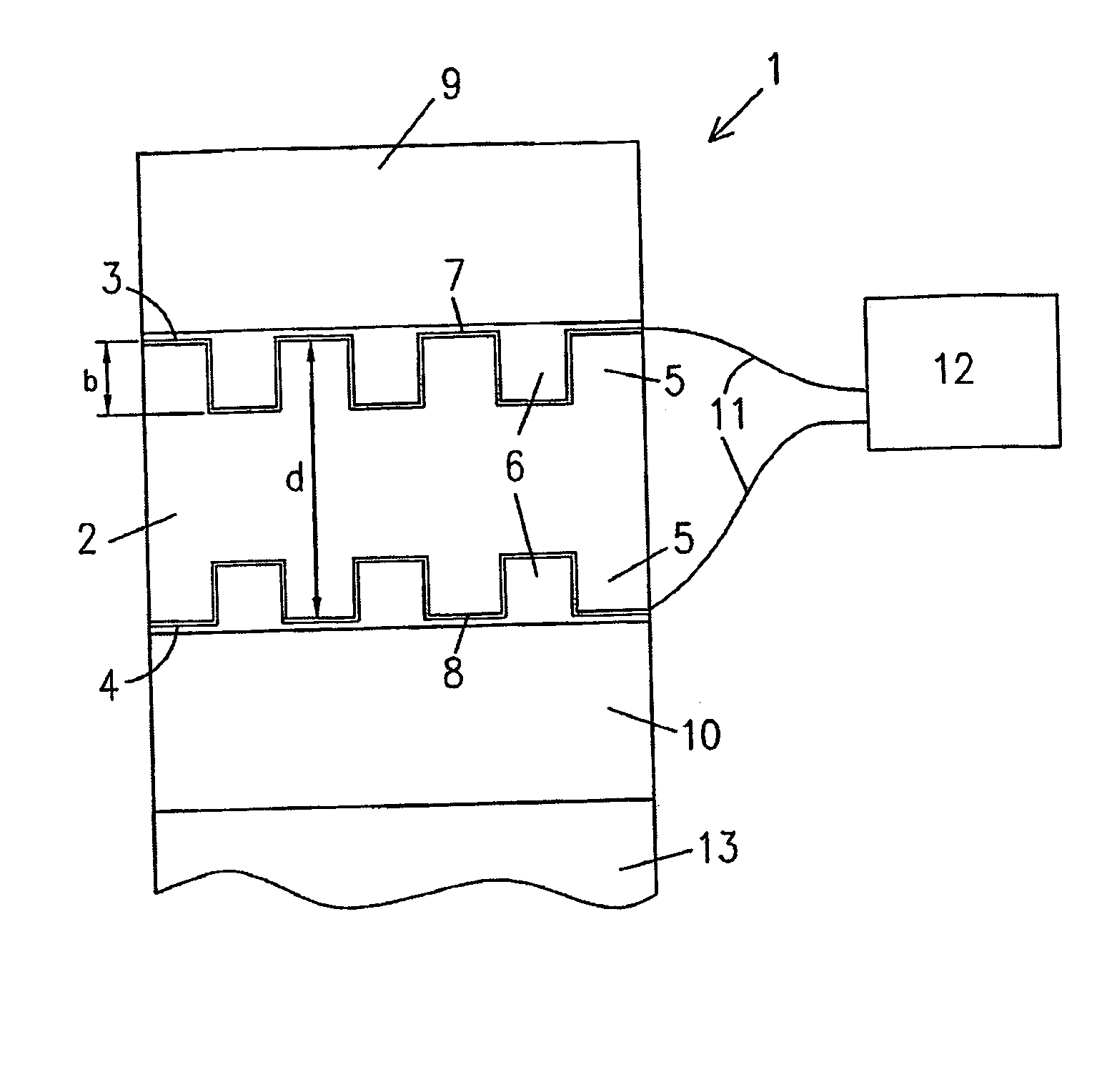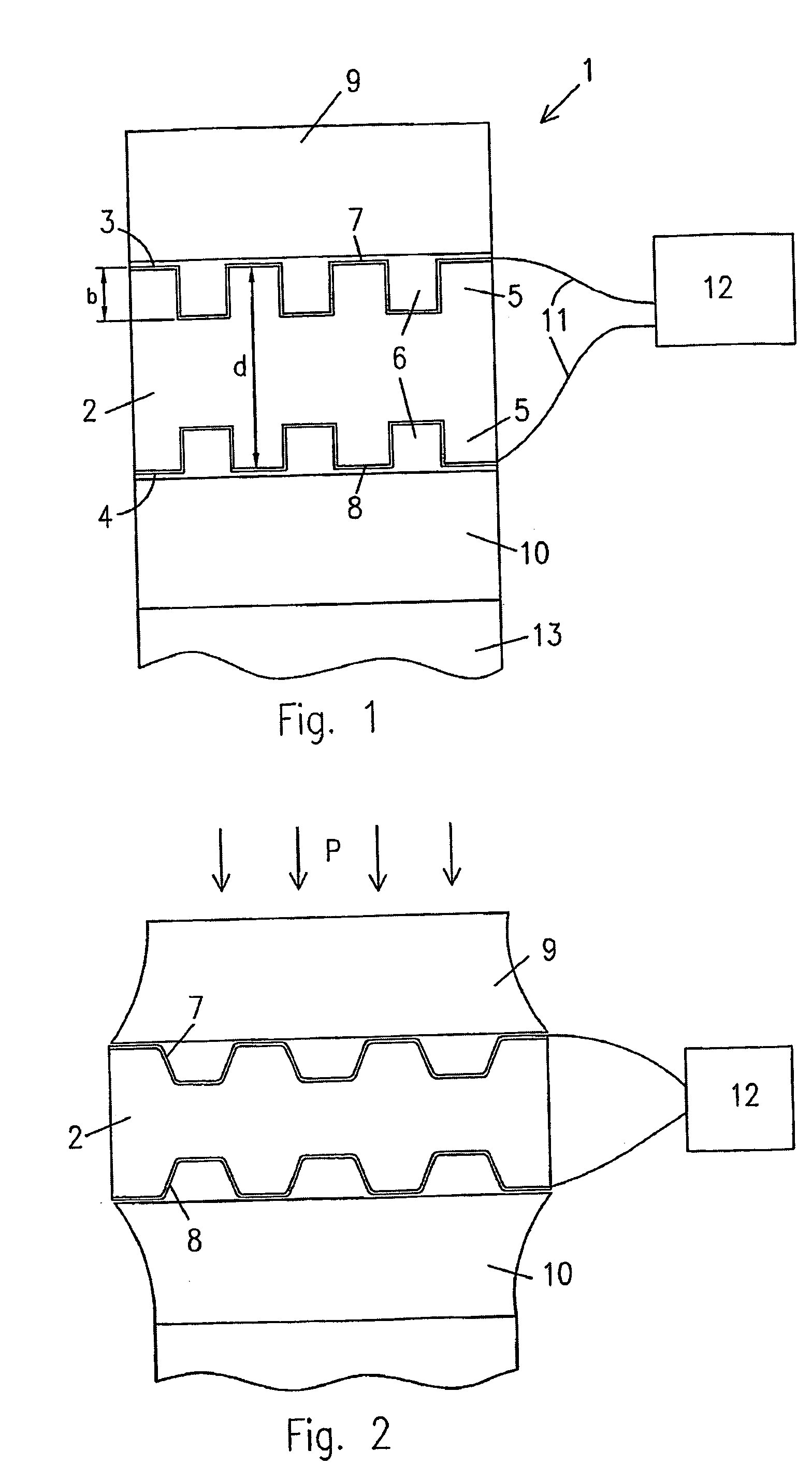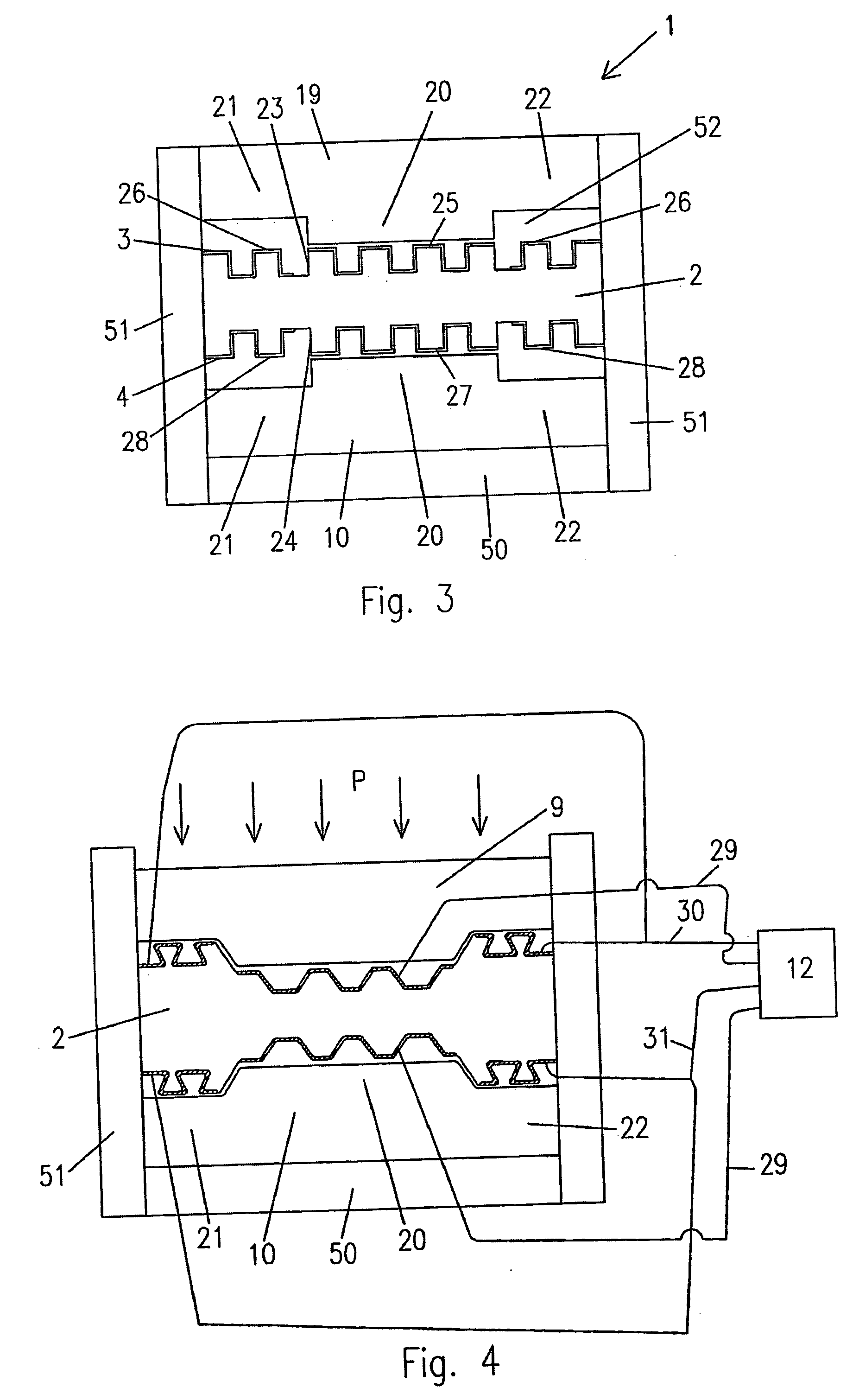Tactile sensor element and sensor array
a sensor array and tactile technology, applied in the field of sensors, can solve the problem of relative high cost of manufacturing and packaging
- Summary
- Abstract
- Description
- Claims
- Application Information
AI Technical Summary
Benefits of technology
Problems solved by technology
Method used
Image
Examples
Embodiment Construction
[0026]FIG. 1 shows a tactile sensor element 1 with an elastomeric body 2, preferably made of silicon rubber sheet material. The body has upper and lower surfaces 3 and 4, which have corrugations in the form of parallel ridges and grooves 5 and 6 running across the width of the body in a direction perpendicular to the drawing plane. The ridges and grooves are shown with square profiles, however, other profiles such as sinusoidal or rectangular may be applicable. The depth b of the grooves is typically in the range of 10 to 30% of the total thickness d of the body, which typically is 10 to 50 μm. As an example, the body has a thickness of 20 μm with corrugation depths of 5 μm.
[0027] Metal electrodes 7 and 8 are arranged on both upper and lower surfaces 3 and 4 by deposition of a thin uniform metal layer, such as gold, silver or copper, by use of suitable deposition technique. The electrodes are connected with lead wires 11 to external means 12 for measuring the capacitance of a capac...
PUM
 Login to View More
Login to View More Abstract
Description
Claims
Application Information
 Login to View More
Login to View More - R&D
- Intellectual Property
- Life Sciences
- Materials
- Tech Scout
- Unparalleled Data Quality
- Higher Quality Content
- 60% Fewer Hallucinations
Browse by: Latest US Patents, China's latest patents, Technical Efficacy Thesaurus, Application Domain, Technology Topic, Popular Technical Reports.
© 2025 PatSnap. All rights reserved.Legal|Privacy policy|Modern Slavery Act Transparency Statement|Sitemap|About US| Contact US: help@patsnap.com



